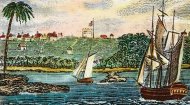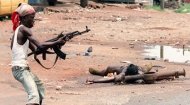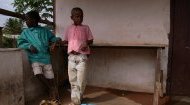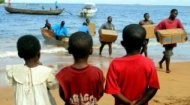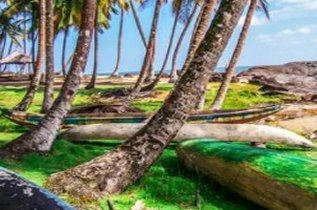|
While initially welcomed by some as a revolution for the indigenous population, Doe's authoritarian rule and ethnic favoritism quickly led to widespread human rights abuses and political instability. This volatile environment culminated in the First Liberian Civil War, which began in 1989. Led by Charles Taylor, a former government official, the National Patriotic Front of Liberia (NPFL) launched an insurgency that plunged the country into a brutal and protracted conflict. Characterized by extreme violence, child soldiers, and the systematic targeting of civilians, the war devastated the nation, claiming an estimated 250,000 lives and displacing millions. A brief period of uneasy peace and an election in 1997 saw Taylor assume the presidency, but the underlying grievances were far from resolved.
Liberia's social profile is rich and diverse, a reflection of its complex history. The nation is home to over 16 distinct indigenous ethnic groups, including the Kpelle, Bassa, Gio, Kru, Grebo, Mandinka, and Vai, each with its own language, customs, and traditions. While English is the official language, primarily used in government and education, countless indigenous languages are spoken daily, particularly in rural areas. Christianity is the dominant religion, with a significant Muslim minority and a strong presence of traditional African beliefs that often intermingle with both formal faiths. The civil wars profoundly fractured Liberia's social cohesion, leaving deep scars and a legacy of trauma. Rebuilding trust and fostering national unity across ethnic and religious lines remains an ongoing process. Education, though prioritized in post-conflict recovery, faces significant challenges. Many schools lack adequate resources, qualified teachers, and proper infrastructure, especially outside of the capital, Monrovia. Literacy rates are improving but remain a concern, particularly for women and in rural communities. Healthcare is another critical area still recovering from years of neglect and the severe blow of the Ebola crisis. While international aid and government efforts have strengthened the health system, access to quality medical care, particularly in remote regions, remains limited, and the country struggles with high rates of maternal and child mortality and prevalent infectious diseases. Despite these hurdles, the Liberian people are renowned for their warmth, hospitality, and a strong sense of community. Family ties are paramount, and traditional values of respect for elders and collective responsibility are deeply ingrained. Music, dance, and oral storytelling are vibrant aspects of Liberian culture, serving as powerful expressions of joy, sorrow, and shared identity. The Liberian economic profile is characterized by its abundance of natural resources balanced against significant infrastructural deficits and the enduring impact of civil conflict. Rich in minerals such as iron ore, diamonds, and gold, as well as vast timber and rubber resources, Liberia possesses considerable potential. Agriculture remains the primary livelihood for most of the population, with staple crops including rice (often imported), cassava, and plantains, alongside cash crops like palm oil, coffee, and cocoa. Firestone Natural Rubber Company, operating one of the world's largest rubber plantations, has been a major employer for decades. Cont/... |
Liberia Profile |
Liberia Profile |
Liberia Profile | Liberia Profile |
Find out more about children's lives in Liberia in pictures and video together with facts and figures.
More >
Make a virtual landing at Roberts International Airport, named after the country's first president.
More >
Read all the latest news and current events from Liberia online at our Liberian news page. Updated daily.
More >
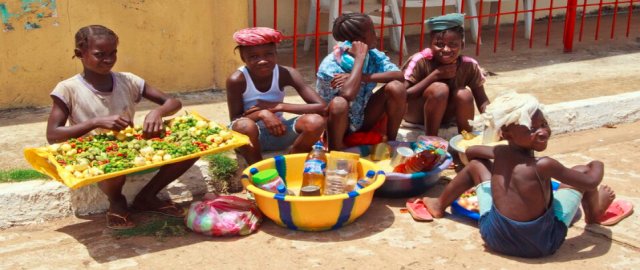
|
However, the economy faces numerous challenges. Over-reliance on raw material exports makes it vulnerable to global commodity price fluctuations. Limited industrialization means most value-added processing occurs outside the country. Infrastructure, severely damaged during the wars, is slowly being rebuilt, but inadequate roads, unreliable electricity, and limited access to clean water continue to hinder development and deter investment. Corruption, though targeted by reform efforts, remains a persistent issue, impacting governance and economic efficiency. High unemployment, particularly among the youth, is a critical social and economic concern, contributing to societal frustrations. Post-conflict, Liberia has made strides in attracting foreign direct investment, particularly in mining, agriculture, and nascent energy sectors. The government is working to diversify the economy, improve the business climate, and strengthen institutions. However, the path to sustainable economic growth is long, requiring continued investment in human capital, infrastructure development, and good governance to transition from a resource-dependent economy to one that provides broader opportunities for its citizens. For many Liberians, daily life is a testament to resilience and the enduring human spirit. In the bustling capital of Monrovia, the streets pulse with activity. Commuters navigate crowded taxis, colorful "kekehs" (three-wheeled auto-rickshaws), and motorbike taxis, while vendors throng vibrant markets selling everything from fresh produce and fish to clothing and electronics. The air is often thick with the aroma of street food, particularly the ubiquitous rice paired with a variety of flavorful stews. Outside the urban centres, daily life shifts to a more agrarian rhythm. Rural communities often rely on subsistence farming, with families working together in the fields. Access to modern amenities like electricity and piped water is scarce, and communities often gather water from communal wells or streams. Despite these hardships, community bonds are incredibly strong, and mutual support is a cornerstone of rural existence. Celebrations, religious gatherings, and communal work are integral to social cohesion. Hospitality is deeply ingrained, and visitors are often welcomed with open arms, sharing meals and conversation.
Despite its turbulent history, Liberia possesses an abundance of natural beauty and cultural richness that holds significant potential for tourism development. Currently, tourist attractions are largely undeveloped, offering a raw, authentic, and off-the-beaten-path experience for adventurous travellers. Monrovia itself (above) offers historical insights. Providence Island, where the first freed slaves landed, serves as a poignant reminder of the nation's origins. The Liberian National Museum houses artifacts that tell the story of the country's diverse cultures and history. Visitors can also explore bustling local markets for unique crafts and experience the vibrant urban energy. Liberia's coastline boasts pristine, often deserted beaches. Robertsport, a historic town in Grand Cape Mount County, is particularly renowned for its world-class surfing waves, drawing a small but dedicated international surfing community. Other beautiful stretches of sand can be found near Monrovia, like Kendeja and Silver Beach, offering tranquility and stunning sunsets. For nature enthusiasts, Sapo National Park in the southeastern part of the country is Liberia's only national park and a jewel of biodiversity. This dense tropical rainforest is home to a remarkable array of wildlife, including critically endangered pygmy hippos, forest elephants, chimpanzees, leopards, and over 500 bird species. Exploring Sapo offers a truly immersive wilderness experience, though facilities are rudimentary. Other natural wonders include the imposing Mount Wologizi and the picturesque Kpatawee Waterfalls, both offering opportunities for hiking and immersion in nature.
Today Liberia is in 177th place out of 193 countries and territories in 2025 in terms of life expectancy, literacy, access to knowledge and the living standards of a country. On this page you can explore facts and information about Liberia in a series of articles and videos together with news about Liberia. |
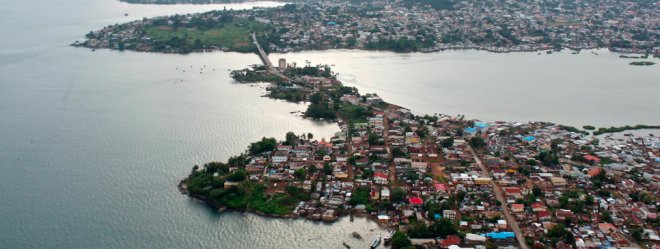
 The Second Liberian Civil War erupted in 1999, further tearing the country apart. It wasn't until 2003, with international intervention and Taylor's resignation and exile, that a fragile peace began to take hold. The subsequent election of Ellen Johnson Sirleaf in 2005 marked a pivotal moment; she became Africa's first democratically elected female head of state, symbolizing Liberia's commitment to peace, reconstruction, and a new democratic chapter. Her presidency focused on rebuilding infrastructure, restoring governance, and fostering reconciliation. However, the nation faced another formidable challenge in 2014 with the devastating Ebola virus outbreak, which severely tested its nascent healthcare system and brought the country to a standstill, once again demonstrating the sheer resilience of the Liberian people in overcoming adversity.
The Second Liberian Civil War erupted in 1999, further tearing the country apart. It wasn't until 2003, with international intervention and Taylor's resignation and exile, that a fragile peace began to take hold. The subsequent election of Ellen Johnson Sirleaf in 2005 marked a pivotal moment; she became Africa's first democratically elected female head of state, symbolizing Liberia's commitment to peace, reconstruction, and a new democratic chapter. Her presidency focused on rebuilding infrastructure, restoring governance, and fostering reconciliation. However, the nation faced another formidable challenge in 2014 with the devastating Ebola virus outbreak, which severely tested its nascent healthcare system and brought the country to a standstill, once again demonstrating the sheer resilience of the Liberian people in overcoming adversity.